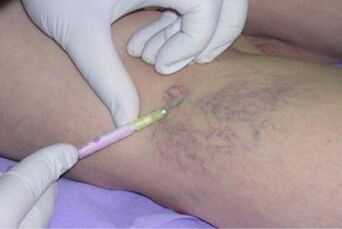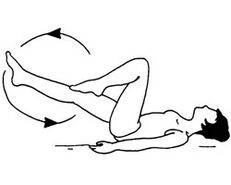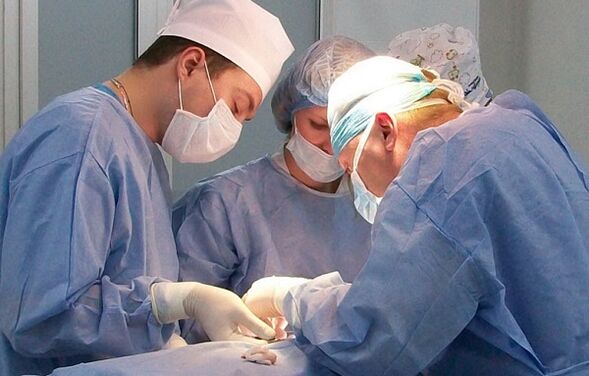
Varicose veins of the lower extremities are a chronic disease accompanied by cluster-like vasodilation of the legs. The main causes of varicose veins are hereditary predisposition, excessive exercise or a sedentary lifestyle. Women are more prone to this disease, especially after childbirth. In the male genus, varicose veins in the legs may be caused by the presence of arterio-venous messages.
When the first signs of varicose veins appear, which include visible nodular changes in the blood vessels, pain and swelling in the legs and feet, it is advisable to see a doctor. After examination and accurate diagnosis, the doctor in each case determines how to treat varicose veins in the legs.
Conservative therapy
Conservative therapy for varicose veins is quite varied and can only reduce the manifestations of this disease but cannot cure the cause.
Diet and compression
Special exercises against varicose veins that anyone can do at home. Their purpose is to strengthen the muscles of the legs, which helps maintain the veins in good condition. The most effective are:

- Bicycle: lying on your back, take turns moving your legs in a circle.
- Roll a tennis or baseball ball on the floor with your feet. Using a special massage ball can improve microcirculation.
- Standing on tiptoe, the calf muscle is well trained, which compresses the varicose veins.
- Swimming with a plank helps keep all leg muscles in excellent physical condition with minimal strain.
An overweight diet is high in fiber and limits the intake of animal fats and carbohydrates, reduces foot stress, and can be used successfully to treat varicose veins at home.
Knitwear for the treatment of varicose veins (knee-length, stockings) differs in the degree of compression. To record properly at home, you often need to use special tools. Underwear should be worn during the day, only removed at night. The principle of action is based on the external compression of the varicose veins of the foot and the improvement of blood flow. Instead of a medical leotard, you can use a regular elastic bandage to treat the varicose veins, which is wound in a spiral from the fingertips to the middle of the thigh by heel grip. It is important that the new turn overlaps at least half with the previous one.
A pneumatic massager, which is a cuff into which air is delivered under pressure, can be effective in treating varicose veins in the early stages of the disease. In this case, a method of compression is used, which improves blood circulation and reduces edema. You can also use this tool at home.
Medicines
Varicose veins on the legs should be treated with ointments and tablets only at the beginning of the disease or when complications develop.
The main classes of medicines are:
- Verotonics increases the tone of veins, relieves edema and improves peripheral blood outflow.
- Medicines that improve microcirculation are effective when taken orally or in the form of drips.
- Antiplatelet agents that prevent blood clots from forming.
- Non-steroidal anti-inflammatory drugs to reduce varicose vein pain and swelling.
The use of all medicines should be discussed with your doctor as there is a possibility of side effects.
It is impossible to cure varicose veins by traditional methods; it can only slow down the process and delay the onset of serious complications such as thrombophlebitis.
When surgery is indicated
Surgical treatment of varicose veins does not always involve open surgery. Thanks to modern development, it is possible to remove outpatient varicose veins on the legs. The following methods of radical treatment are most commonly used:
- Sclerotherapy is based on a substance entering the lumen of the affected vein, which holds it together and shuts it out of the systemic circulation. This method is suitable for small diameter vessels in the early stages of the disease. The relapse rate reaches 30%.
- Radiofrequency ablation and laser ablation are modern and effective treatments that destroy the inner lining of a vein. It is performed under local anesthesia and leaves no trace on the skin.
- Phlebectomy - direct removal of a vein with small incisions. This method allows varicose veins to heal, but is gradually relegated to the background because the surgery is quite traumatic and the rehabilitation period is long.

How traditional medicine can help
Varicose veins in the legs are a fairly common problem, including in pregnant women for whom traditional treatment is contraindicated. That’s why so many recipes have been created about folk remedies to alleviate the manifestations of the disease at home:
- Common hop decoction is put in a glass three times a day. To make it, you need to take a tablespoon of crushed cone and pour hot water on it.
- During treatment with apple cider vinegar, you should rub your feet with you for a month and drink a teaspoon of water at the same time.
- Sliced green tomatoes or grated raw potatoes can be applied to hardened buds overnight.
- The substances that make up horse chestnuts have a tonic effect on the blood vessels. To make a liter of tincture, pour 50 g of inflorescence with vodka for two weeks. Drink 2 tablespoons three times a day.
- To make an effective ointment, add a teaspoon of dry St. John’s wort, foal legs, chamomile, meadow seeds and chicory, pour 100 ml of water, bring to a boil and mix with the badger fat. Apply three times a day for a week under a plastic bandage.
Our grandmothers ’recipes aren’t always effective, but they allow varicose veins to be treated at home when there’s no other option. Don’t abuse this, you better turn to a vascular surgeon for examination and treatment.
Hereditary factors, improper lifestyle and excessive stress on the legs play an important role in the development of varicose veins. Exercise and diet can help reduce the likelihood of this condition and slow down the onset of symptoms. But varicose veins can only be cured with surgery after a full examination.












































